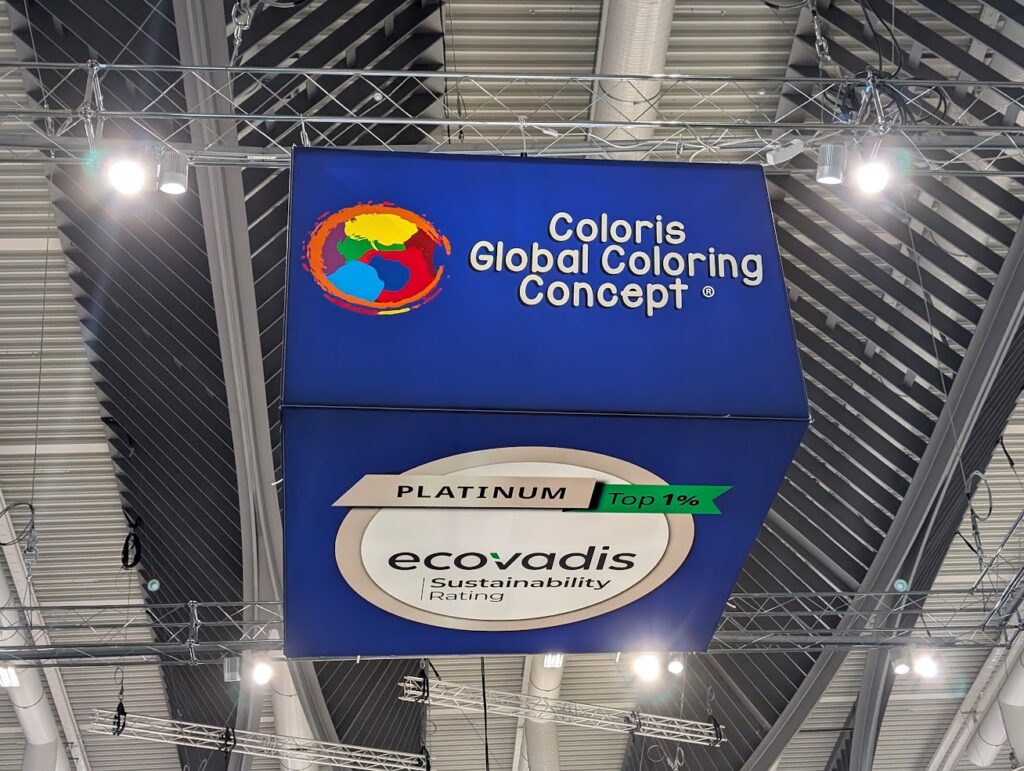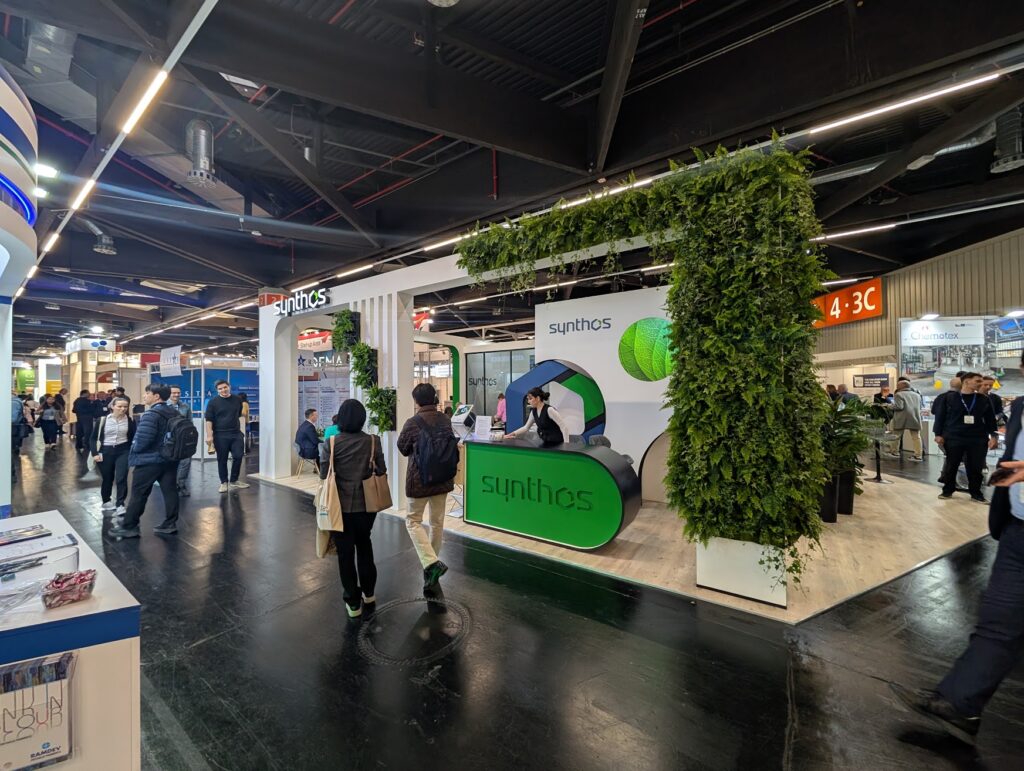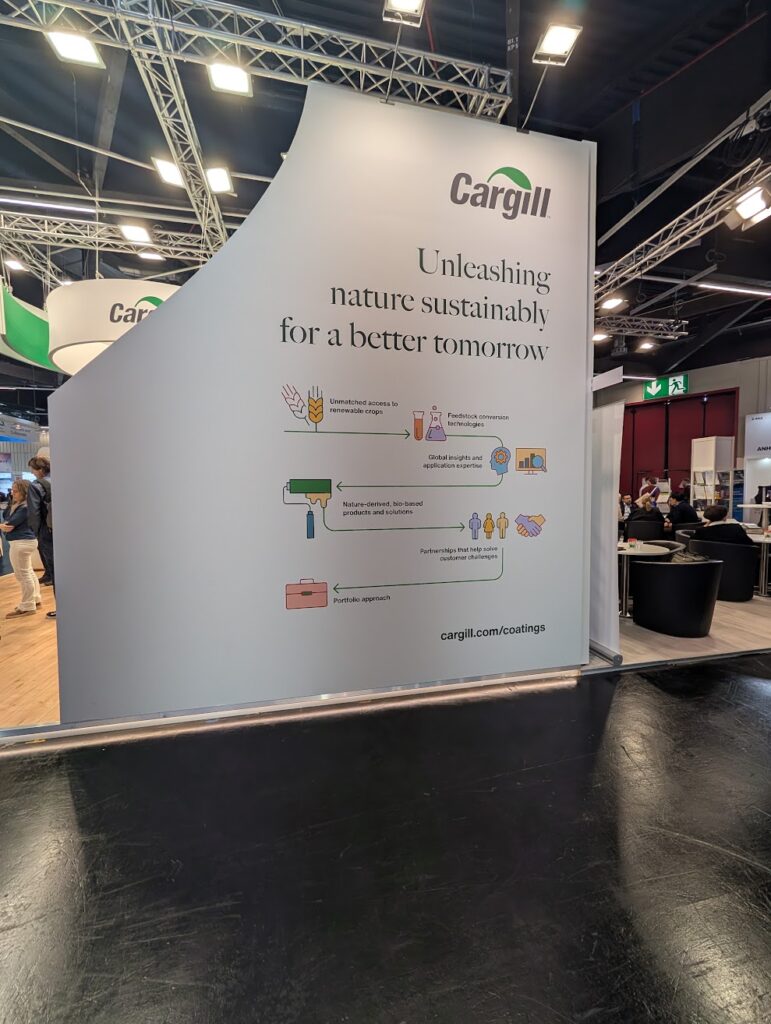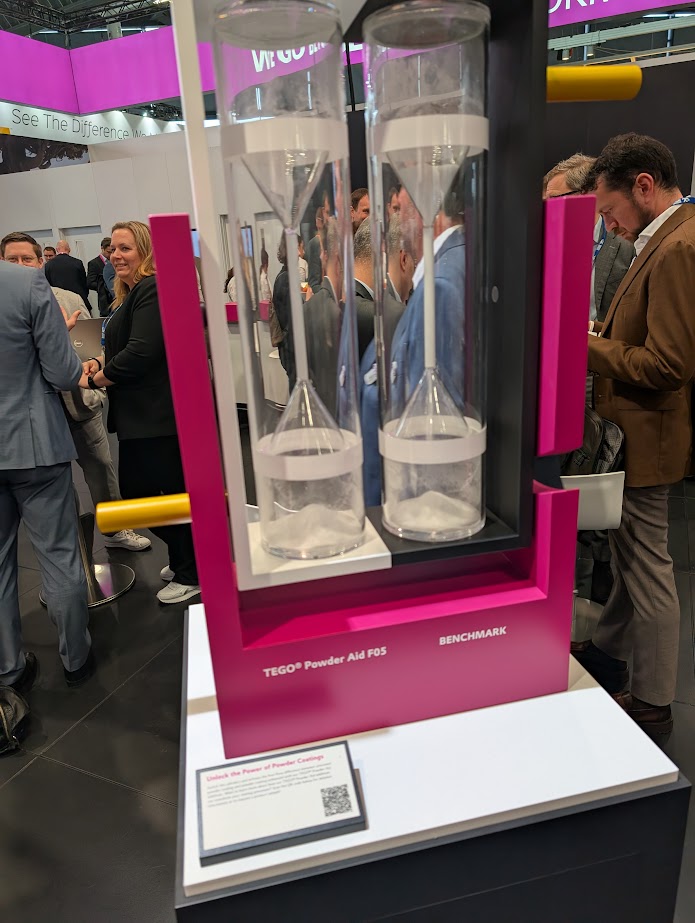The European Coatings Show (ECS) in Nuremberg was a riot of colour and chemistry, with formulators, additive suppliers and pigment specialists gathering from across the globe. Walking through eight packed exhibition halls, visitors navigated a landscape of paint samples, coating technologies and live demonstrations – all vying for attention in a fiercely competitive market.
But before the crowds poured into Nuremberg’s exhibition halls, we set out to understand the strategic groundwork being laid behind the scenes. In this blog, we’ll explore how the themes uncovered in our pre-show research played out on the show floor—comparing expectations with execution and highlighting standout examples of brand positioning, visual storytelling and innovation in action.
Setting the benchmark with pre-show research
In the lead-up to ECS, we explored how brands in the specialty coatings sector were preparing to make an impact—looking closely at their messaging, product focus and approaches to visual and strategic differentiation. By analysing marketing and communications from key players, we identified recurring themes around innovation, sustainability and brand storytelling, as well as notable gaps in consistency and clarity.
Now, with the benefit of firsthand experience from the show, we’re comparing these pre-show expectations with what brands actually delivered. This analysis highlights where companies rose to the challenge—and where there’s still room to sharpen positioning and stand out more boldly in an increasingly competitive market.
- Sustainability: evidence over claims
Our pre-show research identified most agree that sustainability messaging is a key focus area— however, many have historically struggled to substantiate their environmental claims with tangible evidence. What was particularly noteworthy at ECS 2025 was how companies have moved beyond merely talking about sustainability to actively demonstrating their commitments.
EcoVadis ratings —which measure company sustainability performance across environmental, labour, ethics and sustainable procurement dimensions— were prominently displayed across numerous stands, with companies showcasing their top 1% and 5% standings, countering greenwashing concerns with third-party verification.
Beyond credentials, many stands incorporated natural materials and plant walls to create a “sustainable feel” that complemented their documented achievements. The most successful exhibitors were those demonstrating leadership positions, actively getting ahead of regulations rather than simply reacting to them.



- The challenge of differentiation in a sea of similarity
Our research highlighted challenges in brand differentiation across the industry at multiple levels. The industry is dominated by trademarked terms that lack meaning to outsiders, making navigation difficult. Additionally, most brands struggle with visual differentiation and admit their messaging closely resembles competitors.
The visual homogeneity at the show was noticeable, with multiple stands featuring almost identical displays of paint rollers applying coatings to walls. This approach made it difficult to distinguish between exhibitors without examining company logos. The messaging challenges were equally apparent, with similar taglines appearing across different stands.
Against this backdrop, the companies that broke from convention achieved significant standout. Those with distinct visual approaches had memorable stands in an otherwise uniform landscape, proving that investment in creative design can deliver significant differentiation in a technically focused industry. Developing a more ownable look and feel, along with messaging that resonates specifically with your audience’s needs, rather than generic industry claims, can help create more memorable brand experiences.
- Create experiences that educate and engage to draw visitors in
While most brands acknowledge the importance of technical innovation in their messaging, our research showed that many struggle to communicate these benefits in customer-centric terms. Few effectively use storytelling to showcase product applications, often relying on technical specifications that fail to create emotional connections. This disconnect provides a clear opportunity for brands willing to translate their innovations into compelling narratives.
Evonik‘s approach to product display was particularly noteworthy, creating an experience reminiscent of a science museum. One compelling demonstration featured two hourglasses – one with regular powder coating and another with their flow-improvement product – creating an immediate, intuitive understanding of the benefit.
Brenntag took a similarly radical approach, creating small dioramas showing their finishes in realistic environments – miniature rooms featuring their paints in context. Another impressive example was Vibrantz Technologies’ live demonstration of pigment dosing with pearls, which combined working machinery with expert explanation to create a compelling narrative around product benefits. These creative concepts demonstrate how tangible, visual experiences can boost audience understanding while making sure your brand is remembered.



- The human element: personal connections matter
Our research highlighted a disconnect between intention and action: while brands recognise the importance of brand-building activities, many admit they don’t invest sufficiently in them. Face-to-face interactions remain crucial for maintaining brand health in the B2B specialty chemicals sector, despite digital channels’ growing importance.
The most successful stands recognised that physical presence requires more than product displays – it demands thoughtful consideration of visitor experience and interaction. Stand staffing emerged as a critical factor in driving engagement. Spaces with proactive, front-facing teams who actively engaged passersby generated significantly more foot traffic than those where representatives sat passively at the back. Central reception areas that quickly directed visitors to relevant experts proved especially effective.
Several exhibitors created interactive elements ranging from live art installations to custom video games. Notably, these activities succeeded only when staff actively encouraged participation. Without human facilitation, many investment-heavy interactive features went largely unnoticed.
Food and beverage offerings also played a surprisingly important role in creating a welcoming atmosphere. While coffee bars were ubiquitous, branded popcorn giveaways emerged as an unexpected hit, with visitors carrying branded cups throughout the venue—effectively extending brand visibility beyond the stand.
Apply these insights and elevate your presence
Based on what we saw at this year’s European Coatings Show, here are four practical ways B2B marketers in specialty materials can enhance their trade show presence:
- Maximise engagement
Design your exhibition space with visitor flow in mind, placing engaging team members at the front to quickly assess visitor needs and direct them to appropriate experts. Remember that the human element is often more important than physical design in driving meaningful engagement.
- Leverage creativity to differentiate your brand
Move beyond literal product representations and generic industry visuals. Consider telling your brand story through distinctive visual approaches, interactive elements or contextual demonstrations that create intuitive understanding of your value proposition.
- Make sustainability claims credible
Provide tangible evidence of your sustainability efforts through recognised certifications, measurable achievements or demonstrations of how your products enable customers to meet their own sustainability goals.
- Create consistency in branding and messaging
Ensure your exhibition presence aligns with your broader brand positioning. Review your product naming conventions to help customers navigate your portfolio more easily and be wary of overused industry buzzwords – if everyone claims ‘innovation,’ find more meaningful ways to articulate your distinctive value.
Final reflections
What became clear at ECS 2025 is that exhibition stands serve as physical manifestations of a brand’s positioning. In a highly competitive and specialised field like coatings, where technical capabilities may be similar across competitors, how a company presents itself – visually, verbally and experientially – becomes increasingly important in forming lasting impressions.
By creating an environment that communicates brand values, facilitates meaningful connections and delivers memorable experiences, B2B marketers in specialty materials can create more distinctive brands that resonate with their audiences long after the exhibition ends.
Working with a specialist B2B marketing agency like BDB allows brands to achieve more – bringing strategic insights and industry-specific expertise that transform how your brand is perceived in crowded sectors like specialty chemicals and coatings. Speak to our team and find out how we’re up to the challenge of delivering impactful and memorable integrated marketing campaigns to support your brand’s differentiation.
